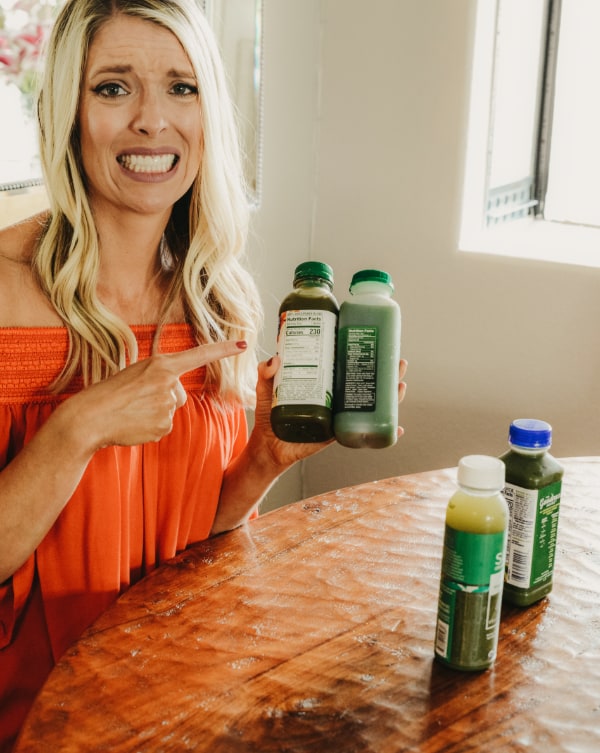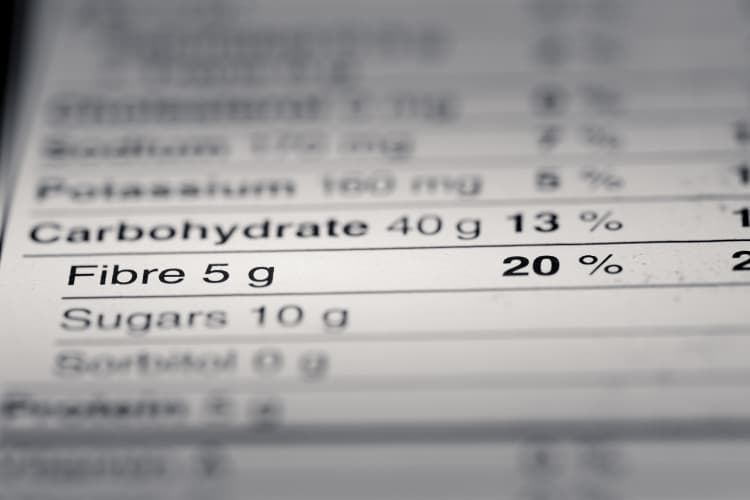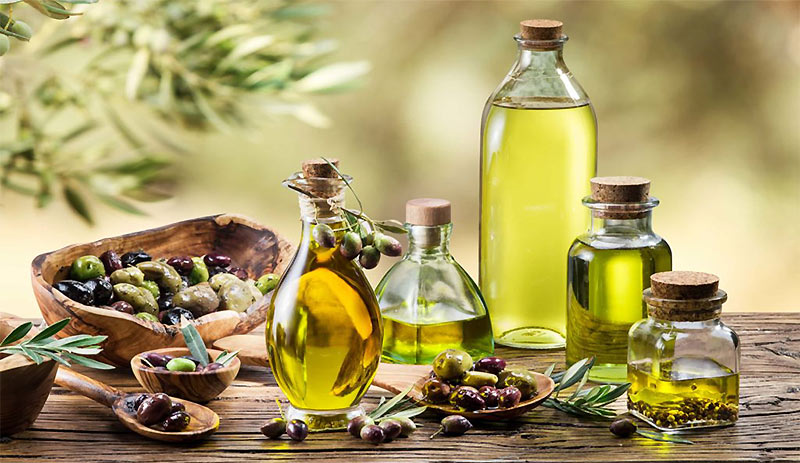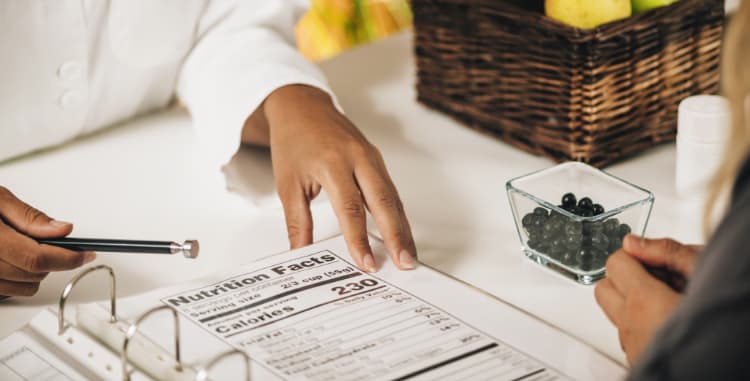We all lead super busy lives. So when we go food shopping, who has time to scrutinize every single ingredient listed on every single nutrition facts label printed on every single item that we’re considering throwing in the shopping cart? Well, if you want to eat as clean as possible so that you can be as healthy as possible, learning how to read the nutrition facts label is critical. Thankfully, as a certified nutritional therapist, I’m here to break it down for you.
Food manufacturers are trying to pull a fast one on you. If you purchase any item that’s in a jar, can or box—with the exception of fresh produce—there’s a decent chance it contains the following:
- Added sugars
- High levels of net carbohydrates
- High levels of sodium
- Very low levels of beneficial minerals
- Rancid vegetable oil or seed oil
- Artificial preservatives
Now, I realize that we don’t live in a perfect world. And so if you’re buying one processed snacky thing like gluten-free pretzels and enjoying it in moderation, I’m not here to judge.
But, have you ever heard the expression, “Death by a thousand paper cuts”? The idea is that one little nick won’t hurt you. But 1000 painful paper cuts could lead to a nasty, fatal infection. This same principle applies to the world of nutrition. When you go food shopping, your goal should be to limit the number of nutritional paper cuts that you put in your shopping cart.
Added Sugars
The first place my eyes immediately go to when I’m purchasing an unfamiliar product is the nutrition facts label. Thankfully, a handful of years ago, our federal government (the FDA) finally did something about the over-consumption of added sugars in the Standard American Diet (SAD).
Let’s ignore the fact that the government itself is largely to blame for that because … well, remember those food pyramids? So what do you think will happen if you eat 6-11 servings per day of bread and other grains? But that’s for another topic…I digress.
Anyhoo, in 2016, the FDA issued rules that updated the nutrition facts label. The biggest update was added sugars. This was such a profound update because it’s shocking how many unsuspecting foods contain added sugars. We expect soda to contain added sugar but not salad dressing, bread, peanut butter and I could go on and on…
According to Harvard T.H. Chan School of Public Health, adult women should have no more than 24 grams of sugar per day and 36 grams for most men. That translates to 6 and 9 teaspoons of sugar, respectively. That’s still too much in my book. But again, that’s for another topic…
Now if you’re someone who doesn’t make a lot of meals from scratch and instead rely on packaged foods, the amount of added sugars in your diet can add up real fast. So that’s why I highly encourage you to read the nutrition facts and check out the number of grams of added sugars. If the label says 1 gram of added sugars, well, I can live with that.
But for metabolic health and weight loss, the goal should be close to zero grams of added sugars. Eventually, you’ll become familiar with the healthiest packaged foods at the markets where you shop. So you won’t need to spend as much time scanning the nutrition facts.
Watch out for added sugars in so-called “healthy" juice drinks. You might be surprised, and not pleasantly.

Net Carbs
“Net Carbs” is NOT something you’ll see listed on the nutrition facts label. To put it simply, net carbs is the number of grams of total carbohydrates minus the number of grams of fiber (as well as sugar alcohol; but try to avoid sugar alcohol if you have gut issues).
Here’s an example:
Total Carbohydrates: 15 grams
Dietary Fiber: 5 grams
Net carbs = 10 grams
Both total carbohydrates and dietary fiber are listed on the nutrition facts label. If even doing some simple math sounds like a chore, then no worries, you don’t have to whip out your calculator. The important thing is to notice how many grams of total carbohydrates a particular food has. If it’s a very high amount, say, like 40 grams or higher, there should be a significant amount of fiber to offset the total carbs.
If there’s very little fiber, then the high amount of carbohydrates can quickly spike your blood sugar levels. Healthy grains like quinoa may have a high amount of carbohydrates but they also have a decent amount of fiber as well as protein.

Fat
When it comes to dietary fat, I’m actually not particularly concerned with the amount of fat unless it’s insanely high, like 50 grams.
What matters more is the type of fat. The Mediterranean Diet continues to have a reputation of being perhaps the single healthiest type of diet on the planet not only because it calls for lots of fresh veggies. Another key component is heart-healthy monounsaturated fats that come from foods like olives, olive oil, avocado (and avo oil) and cold-water oily fish.
I’m also not too concerned about saturated fat although there are some people who need to be careful about their intake of it because their genetics puts them at greater risk for atherosclerosis (hardening of the arteries).
The biggest issue with fat is where it comes from. The unhealthiest sources of fat come from vegetable oil and seed oils. Now I know that may sound counterintuitive because vegetables and seeds sound healthy. But the problem with these oils is that they are heavily refined and they spoil very easily. And how consuming these oils in large amounts may affect your health is that they may cause high inflammation in various parts of your body.
Heavily-processed, packaged foods are typically made with these poor oils that food manufacturers love to use because they are cheap. So if you see corn oil, soybean oil, canola oil or cottonseed oil, try to avoid it. When cooking at home, use avocado oil, walnut oil, ghee (clarified butter) or coconut oil. (Just be careful of the high amount of saturated fat in coconut oil if you have a family history of heart disease.)

Everything Else
Sodium
As for sodium, unless you’re on a sodium-restricted diet or have edema, I wouldn’t pay too much attention. If you buy bone broth or soup stock, it will likely have a lot of sodium. The problem with most high-sodium, packaged foods is that they lack vitamins and minerals. And when you consume too much sodium and not enough beneficial nutrients, it can throw off your electrolyte balance.
Cholesterol
Cholesterol used to be demonized by the mainstream medical establishment. Eating a diet high in cholesterol—mainly anything that’s made from an animal—was thought to be a sure ticket to developing heart disease.
But just in the last handful of years, many (but not all) health experts have changed their stance and no longer regard cholesterol as a nutrient of concern. Why after so many decades did the so-called experts change their mind? Well, the latest research studies cast big doubts about the link between cholesterol consumption and cardiovascular disease. So unless your doctor has advised you to curb your cholesterol consumption, don’t pay too much attention. Just make sure you’re eating clean, organic/wild humanely-raised animal products.
Vitamin D/Iron/Calcium/Potassium
These 4 nutrients are required on nutrition facts labels. Vitamin D is hard to get from food alone so you may want to consider getting it in supplement form, especially in the winter. Many people who eat a high-processed food diet are lacking in iron, calcium and potassium.
So the moral of the story is, if you’re eating lots of fresh produce or drinking low-sugar leafy greens, you don’t have to worry about diligently scrutinizing food labels. At the end of the day, you should be eating real food 90% of the time. The ingredients should be easy to pronounce (salad, fish, Green Drink, brown rice), mostly consisting of plants.

Chef V cooking at her Joshua Tree retreat in 2021

